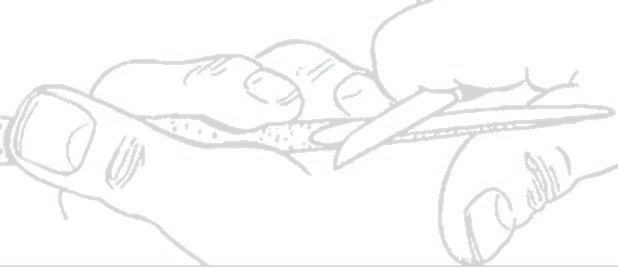A great way to continue learning, and increase your whittling/carving abilities is to study and analyze someone else's work. I am not talking about the subject matter, but what makes the specific piece stand out. What techniques are in use? There is much to be learned from determining why you like a specific piece or work. In a recent carving exchange (W3E ) I received this piece by Kevin Applegate. There is lots to look at in this carving. What makes this carving distinctive?
The Hair, the eyes, the nose, the ears,the mustache. and the shirt and tie. Following is an attempt to analyze Mike Applegate's carving in regard to its hair and eyes. We can always learn from looking at other carvings. I thank Mike Applegate for his permission to use his carved piece in this effort.
HAIR
I think that the hair stands out because it is the product of "roughing out" the piece before the detail was added. Some merely texture the hair on the head. This results in "flat" hair that looks like it was added as an after thought. The hair on Kevin's carving was carved into an area that was "blocked out" and stands out from the forehead/face. This gives depth to the hair. It's the same with the mustache.
EYES
Since I'm mainly a whittler, I try to use my pocket knife only. This means that when I analyze a carving I try to determine how to make the cuts with a knife. In this instance I am fairly confident that these eyes can be done with a sharp pocket knife. To start with this piece was done "on the corner". After the nose is roughed in you can start the eyes. Looking at the eye, you'll notice that it can start with four (4) arches. These arched cuts define the top and bottom of the eye brow (1 & 2), the bottom of the eye lid (3), and the top of the eye ball (4).
Cuts 1 through 4 are straight in stop cuts that could be made with the tip of the knife.
After the 4 arched stop cuts are made one can pare down to the top of the eye brow to make it stand out. Next one can remove a thin tapered slice from the bottom of the eye lid (stop cut 3) to the cut that defines the bottom of the eye brow. This cut will make the eye lid and the eye ball kind of round. The next cut should be at the top of the eye ball (stop cut 4). Remove a thin sliver following the stop cut. This cut will result in the eye lid standing out from the eye ball, and the eye ball kind of setting back from the eye lid.
To complete the eye, make a stop cut that defines the bottom of the eye ball. Make a few more shallow stop cuts to define bags under the eye, and remove slivers of wood to these stop cuts.
With the tip of your knife remove small triangle chips from the corners of the eye ball, which will further round the eye ball. Finally, make a chip carving cut and remove a chip for the eye pupil.





2 comments:
Comment removal.....As much as I want comments, I have lots of members who do not like to see advertizements within or attached to a comment. Sorry!
Post a Comment